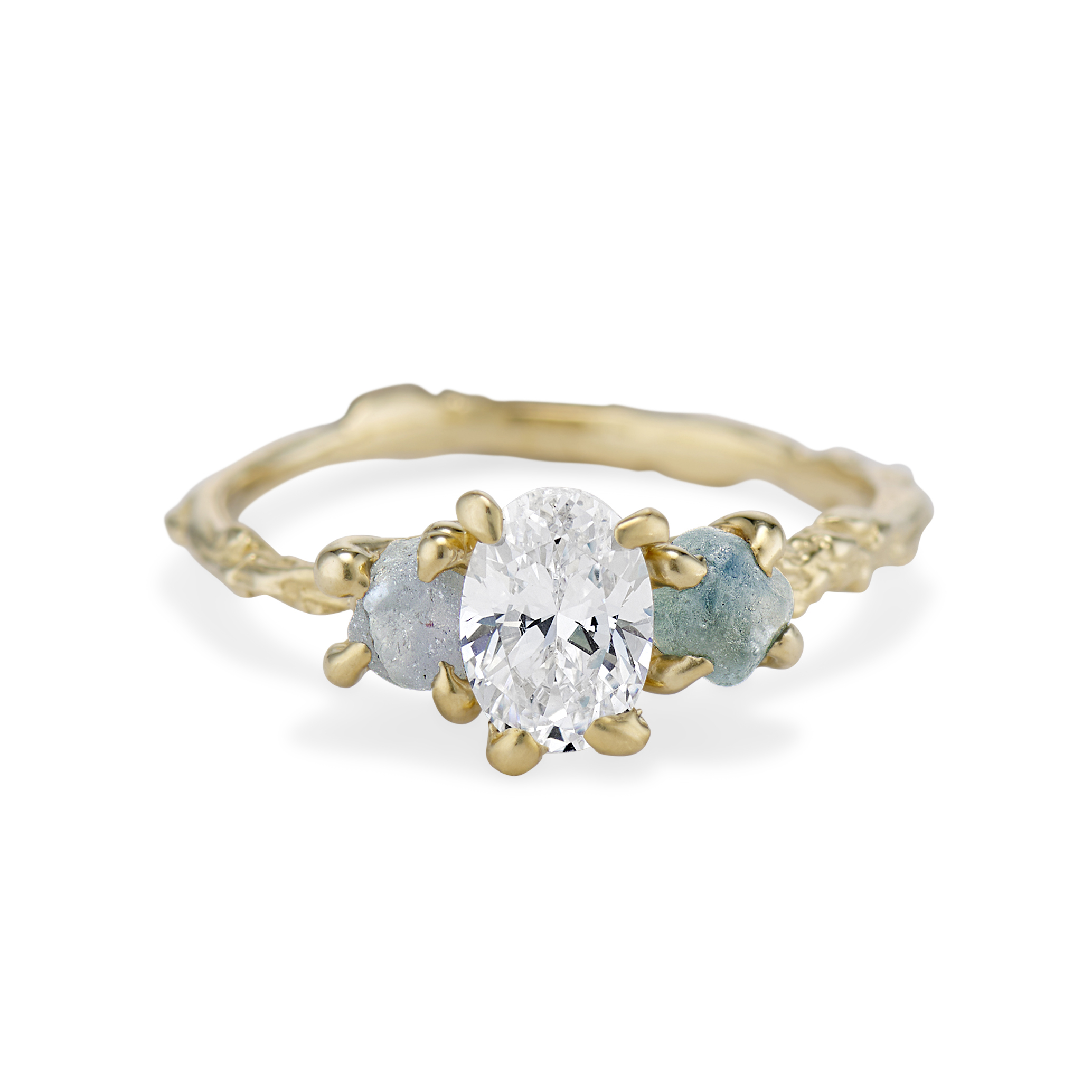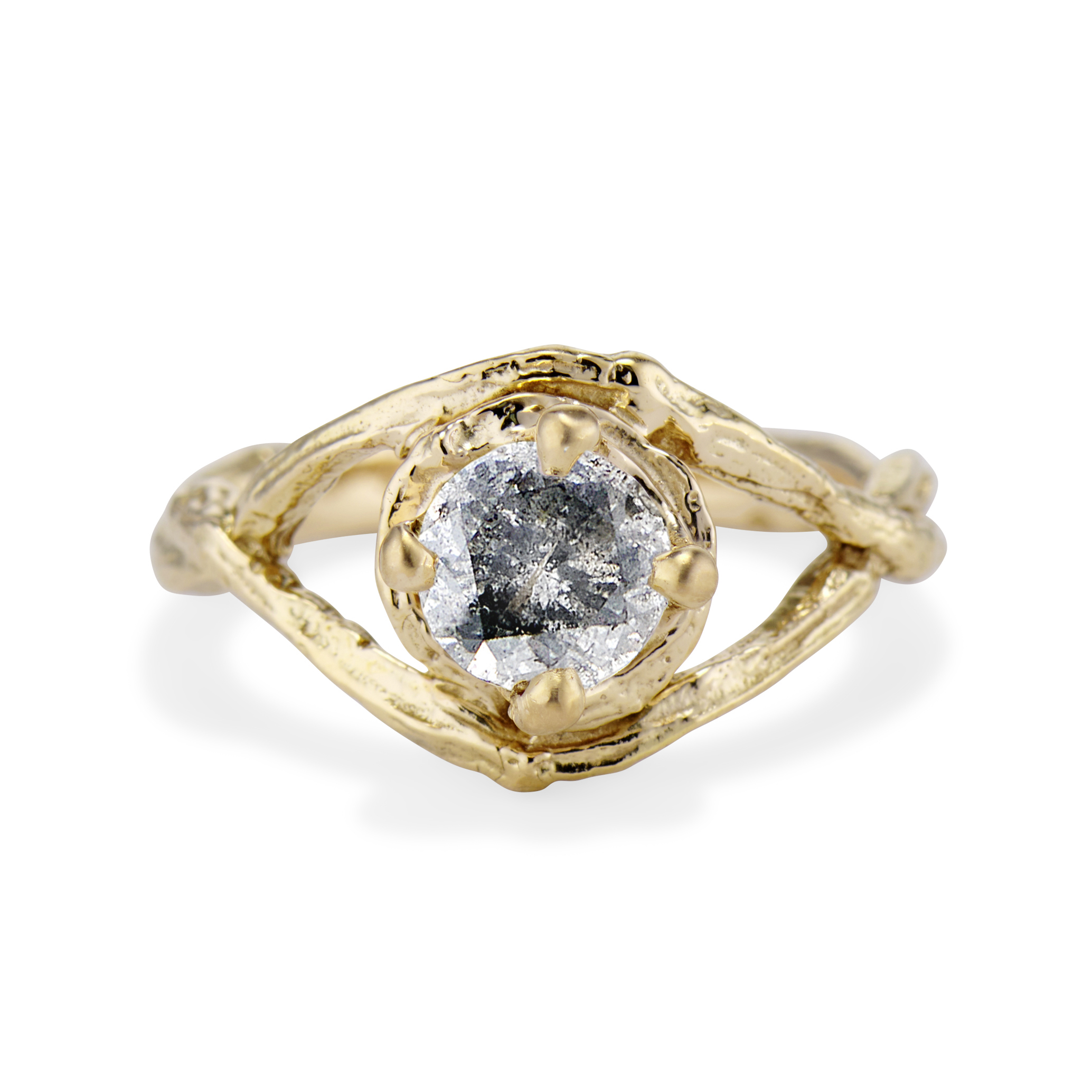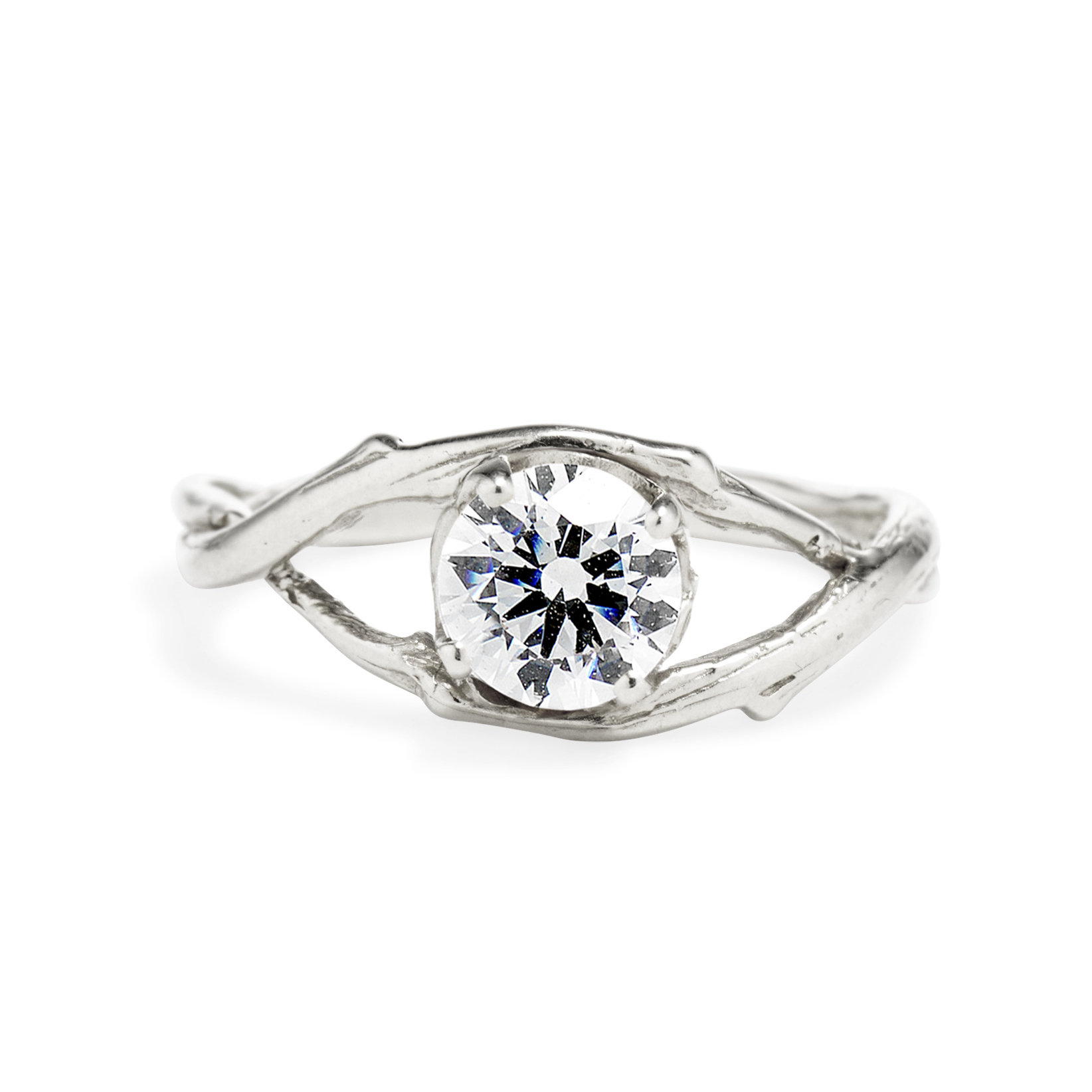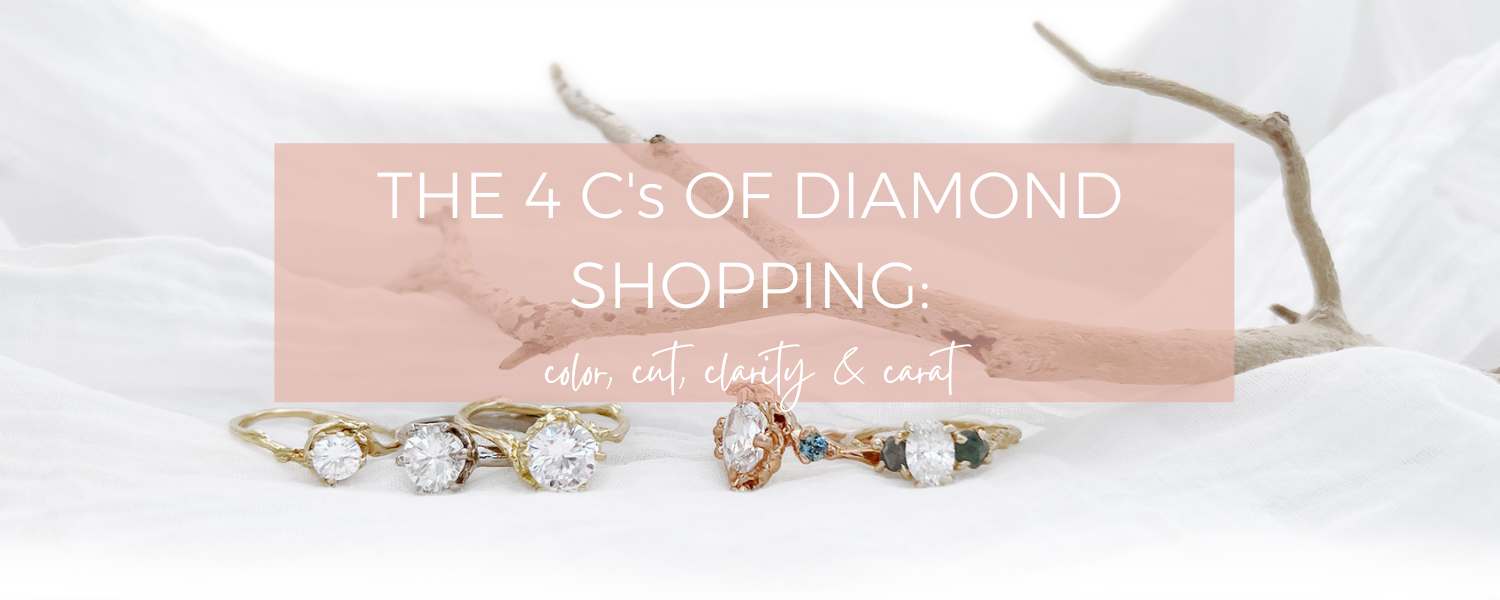Posted by Olivia Ewing on 9th May 2022
View Post
COLOR, CUT, CLARITY, AND CARAT!
‘The 4C’s of Diamonds’ is a phrase that is commonly thrown around online when discussing diamonds or gemstones- but what does it mean?
Maybe you know that each of the 4C’s stand for Cut, Color, Clarity, and Carat. Maybe you know that each of the 4C’s work together with one another to determine the overall value of the gemstone.
Or, maybe you don’t know any of that (that's ok!). Whether you are simply looking for tips regarding finding the best gemstone, have a beginner's knowledge of the 4C’s, or are scratching your head completely dumbfounded, we’ve got you covered!
WHAT ARE THE 4C’S?
What are the 4C's of diamonds? The 4C’s are the individual components that determine a diamond’s grade and, therefore, value. The Cut, Color, Clarity, and, Carat make up the 4C’s.
The 4C’s were developed in the 1940s thanks to Robert M. Shipley, the founder of the Gemological Institute of America (GIA). Then and now, the GIA provides formal trainings and workshops to jewelers while continuing to develop the ethical and standard guidelines around buying and selling gemstones.
Before Robert M. Shipley developed the 4C’s, there was no standardized way to talk about the four factors that influenced the value of a gemstone, and, as a result, diamond and gemstone prices varied widely and inconsistently.
Today, the 4C’s are accepted and practiced the world over resulting in a common and consistent grading system for merchants, jewelers, and customers to utilize.
DO THE 4C’S APPLY TO MORE THAN JUST DIAMONDS?
While the 4C’s were developed to create a common language and system around diamonds they also apply to various gemstones, such as rubies, sapphires, tourmaline, emeralds, and more.
There are slight variations in grading when utilizing the 4C’s towards colored gemstones (all of which we’ll get into detail below). But for the most part, all you need to know is that the 4C’s extend to all gemstones, colored or not.
Ready to learn all about the 4C’s? Let’s get to it!

Naples Oval Diamond and Montana Sapphire three Stone Ring
CUT
The only 4C not directly influenced by nature, the cut of a gemstone refers to the quality of the gemstone’s various angles, proportions, facets, and finishing details. Most often, a gemstone’s cut is considered the most important 4C, especially in relation towards diamonds, as all of the different factors of the cut of the diamond directly contribute to the gemstones sparkle and fire.
CUT VS. SHAPE: AN IMPORTANT DISTINCTION
While oftentimes the terms cut and shape are able to be used interchangeably, when relating to the 4C’s grading system, they are not the same thing.
As explained above, the cut of a gemstone is how the gem has been cut to maximize shine and sparkle through the arrangements of facets on the gemstone.
The shape of a gemstone is the outline and, well, shape that the stone is formed into. Think of shape as the black lines that the cut of the gemstone then colors inside of.
Round is the most common shape utilized in the gemstone world. All other shapes are known as “Fancy Shapes” and include the beloved marquise, baguette, hearts, pear, asscher, and, more.
HOW A GEMSTONE CUT IS GRADED
While the grade of the cut can refer to most gemstones, it is primarily discussed in relation to diamonds. A diamonds cut is graded through the assessment of seven different components: three of which are appearance based (brightness, scintillation, and, fire) and four which are related to the craftsmanship and design of the diamond (weight ratio, durability, polish, and, symmetry).
Once all seven components have been assessed the diamond is then assigned a rating of either excellent, very good, good, fair, and, poor.

EXCELLENT
Diamonds with an Excellent grade have an incredibly bright and even pattern with contrasting dark and light areas.
VERY GOOD
Very Good graded diamonds are similar to Excellent cut diamonds but have a more uneven pattern of bright and dark areas thanks to slightly uneven proportions.
GOOD
Good diamond cuts are an excellent option for those looking for a more affordable diamond thanks to a Good cut diamond’s ideal symmetry but slightly wonky proportions. The result is a diamond that may not cast as bright a shine and scintillation but still appears quite sparkly.
FAIR
Thanks to light exiting the diamonds bottom and sides, Fair cut diamonds offer little brilliance. However, do to the lower price point, Fair cut diamonds make an effective and visually appealing choice when used as a side stone or in a halo setting.
POOR
Poor cut diamonds allow the light to almost entirely escape through the bottom and sides resulting in diamonds with little to no sparkle.
WHAT SHOULD I LOOK FOR WHEN PRIORITIZING CUT WHILE GEMSTONE SHOPPING?
When possible, ask your jeweler about the diamond or gemstones cut grade. If your jeweler cannot supply or ensure the quality of cut you can perform some easy eye tests to determine the quality yourself.
As the International Gem Society details, you should examine the stone to determine its symmetry; the more symmetrical the gemstone the higher the quality of cut. Additionally, try to utilize a magnifier to determine the quality of facets. Do the surface areas of the facets easily reflect light? If not, it may have a poor polish.
While possible, it is not recommended to purchase a gemstone without confirmation from the jeweler regarding the gemstones cut grade. At
Olivia Ewing Jewelry, all our diamonds are Excellent graded to ensure maximum brilliance, fire, and, scintillation, providing ‘Ooh’s’ and ‘Ahh’s’ wherever you go!
COLOR
Color, or its lack thereof, is an important additional factor to consider when shopping for that perfect diamond or colored gemstone. Color in gemstones is generally produced when chemical impurities become present in an otherwise colorless crystal. For example, the brilliant royal purple of amethyst is a result of iron impurities within the amethysts crystalline quartz.
HOW A DIAMOND IS GRADED ON COLOR
The less color a diamond contains the better. When grading diamond color, diamonds are compared to stones of known colors under specific light which highlights the colors natural coloring or lack thereof.
The Gemological Institute of America created the industry grading standard for diamonds and the grade system ranges from D-Z .
Why not start at A? In order to differentiate their scale from earlier, unstandardized, measurements and grading systems the GIA decided to start with D and a completely new grading scale was born, which we’ve broken down below!
The top grade a diamond can receive is a D (completely colorless). E and F, to the untrained eye, also appear colorless, however under special lighting, slight coloration presents.
Take a look at all of the brilliant cut diamonds at Olivia Ewing Jewelry, we only use D,E, or F, graded diamonds, which, when combined with the brilliant cut produces a colorless diamond ring that dances in the light.
G,H,I,J
G,H,I, and J, are all near colorless diamonds. Although not perfect, they are still considered to be within the premium range of color.
Unlike, G and H, I and J graded diamonds, show near discernible faint yellow and brown colors.
K,L,M
You can begin to see yellow and brown colors more clearly in K, L, and M graded diamonds.
Much of the time, diamonds that are graded K, L, or M, are better suited to smaller carats, as the smaller the diamond, the less space it has to refract color. As such, K, L, and M, diamonds make great choices when looking for accent diamonds in an engagement ring.
N,O,P,Q,R
Now we are getting firmly into the colored diamond world. Diamonds with this grade have a discernible light yellow or brown color.
S,T,U,V,W,X,Y,Z
The largest scale, S-Z graded diamonds that have unarguable tints of yellow or brown. These diamonds will also be more affordable, due to their low grade, than the other graded sections.
It should be noted that although graded S-Z diamonds can have yellow tints and coloring they are not bright enough to be considered a fancy yellow diamond.

Chelsea Salt & Pepper Solitaire Ring
WHAT ABOUT EXTRA COLORFUL DIAMONDS?
Extra colorful diamonds are also known as Fancy Diamonds. Unlike S-Z diamonds, that have discernable but weak yellow and brown coloring, fancy diamonds have a deep saturated color throughout, that they are in turn prized for. Fancy diamonds can come in all different shades of the rainbow including: Blue, Pink, Red, Yellow, and, more.
Wondering what the different spiritual meanings are behind fancy diamonds? We’ve got you covered!
HOW IS A GEMSTONE THAT’S NOT A DIAMOND GRADED ON COLOR?
Much like fancy diamonds, gemstones are prized for their color. In fact, for many gemstones, the color grade is the most important 4C.
Unlike fancy diamonds there isn’t a long lettering grading system. Rather, there are two categories that the gemstone is sorted into based on its color hue, tone, and saturation.
HIGH-VALUE COLORED GEMS
High-value colored gems have a deeply vibrant color with intense saturation and bright tones.Think of a glittering red ruby or a lush green emerald, the first thing most people see in their minds eye is the color of the stones, which are then considered high-value.
MODERATE VALUE COLORED GEMS
Moderate-value colored gems are not as deeply colored in terms of hue and saturation and may have darker tones that ultimately dull the overall color of the stone. Here, the gemstone’s color may not be its most defining feature.
CLARITY
Because diamonds and gemstones are formed amidst great pressure and heat, it is all too natural for them to develop a sort of birthmark, otherwise known as inclusion during this time. The less birthmarks a diamond or gemstone contains the better. This also means that diamonds with little to no inclusions will also be pricier.
INCLUSIONS VS. BLEMISHES
We’ve mentioned inclusions above but what exactly are they and are they any different from blemishes? An inclusion is defined as any material that is trapped inside another material during its creation. Inclusions are natural variations within organic material that differ from gemstone to gemstone.
Blemishes, on the other hand, are surface level characteristics that have been produced due to man-made error when cutting, polishing, or wearing the gemstone. Blemishes can include abrasions, extra facets, nicks, pits, polish lines, and more. Like inclusions, the presence of blemishes will lower the clarity grade and therefore the cost of the gemstone.

EMERALDS: THE EXCEPTION TO THE INCLUSION RULE
The emerald is the best known exception to the general rule that the presence of inclusions and blemishes will devalue a gemstone.
Thanks to the quality of crystal during the emeralds creation under intense heat and pressure, emerald inclusions are larger, more frequent, and much more visible to the naked eye. They’re also incredibly common. In most cases, if you come across an emerald that lacks inclusions, it’s most likely fake!
While the less inclusions on an emerald the better, a certain amount of inclusions is still considered completely acceptable as long as the color of the emerald has a vibrant, saturated, hue, and effective cut that allows the emerald to sparkle.
HOW IS CLARITY GRADED IN DIAMONDS?
The GIA has a scale that has six categories and eleven grades total. The scale ranges from completely flawless (FL) to pretty heavily included (I3). As stated before, the more flawless a diamond the higher it’s value will be.
- FL - Flawless- No inclusions or blemishes visible under 10x magnification
- IF - Internally Flawless- No inclusions visible under 10x magnification
- VVS1, VVS2 - Very, Very, Slightly, Included - Inclusions can be observed with great effort only by skilled gemologists under 10x magnification
- VS1, VS2 - Very, Slightly, Included - Minor inclusions are observed with effort under 10x magnification
- SI1, SI2 - Slight Inclusions - Inclusions are able to be observed under 10x magnification without any effort
- I1,I2,I3 - Included- Inclusions are obvious under 10x magnification. These inclusions may affect the brilliance and transparency of the diamond.

HOW IS CLARITY GRADED IN OTHER GEMSTONES
Because there is such a wide range of gemstones with accepted inclusions and blemishes, the grading scale for colored gemstones is less regulated than that for diamonds.
Instead of following the FL-I scale, jewelers must take into account the type of gemstone, its accepted characteristics, and if there are inclusions that are visible to the naked eye. For the most part, the clarity of colored gemstones can be sorted into one of three categories:
- TYPE ONE - The gemstone does not have any inclusions
- TYPE TWO - The gemstone has inclusions but they are only seen under magnification
- TYPE THREE - The gemstone has visible inclusions that can be seen with a naked eye
Clarity is an important aspect to look into when considering purchasing a colored gemstone or diamond.
At Olivia Ewing Jewelry, we have recently raised the grades of our diamonds to VS1 and VS2. As a result, all of our diamonds are indistinguishable from VVS1, VVS2, IF, and FL graded diamonds for just a fraction of the cost.
CARAT

The final, and arguably least important, C is Carat, or the size of the gemstone. One metric carat is equal to 200 milligrams, roughly the weight of a large paperclip. The carat is then subdivided into 100 different points to ensure accurate measuring of weight to the hundredth decimal place.
Generally, the larger the carat size of a gemstone the more expensive the gemstone will be. However, this is not always true if the other aspects of the 4C’s are not equal in value. For example, a diamond that has a poor cut but is 2 carats will be less expensive than a diamond with an excellent cut that is only one carat. For this reason, carat is often considered the ‘extra’ 4C.

Naples Salt & Pepper Diamond Three Stone Ring
WHAT TO KEEP IN MIND WHEN GEMSTONE SHOPPING
At the end of the day, the most important thing to consider when shopping for your future gemstone is to purchase the gemstone that appeals the most to you. While a diamond with an excellent cut and FL graded clarity is great, unless you truly love the diamond, it really doesn’t matter.
Beauty is in the eye of the beholder and current diamond and gemstone trends are shying away from the GIA grading systems in favor of salt and pepper diamonds, rough cut gemstones, and nature inspired rings. Use the 4C’s as a general guide when shopping for a gemstone but don’t let it be the end-all-be-all to your decisions making process. Trust your instincts and you’ll never be led astray.
Meet the Author: Olivia Ewing



